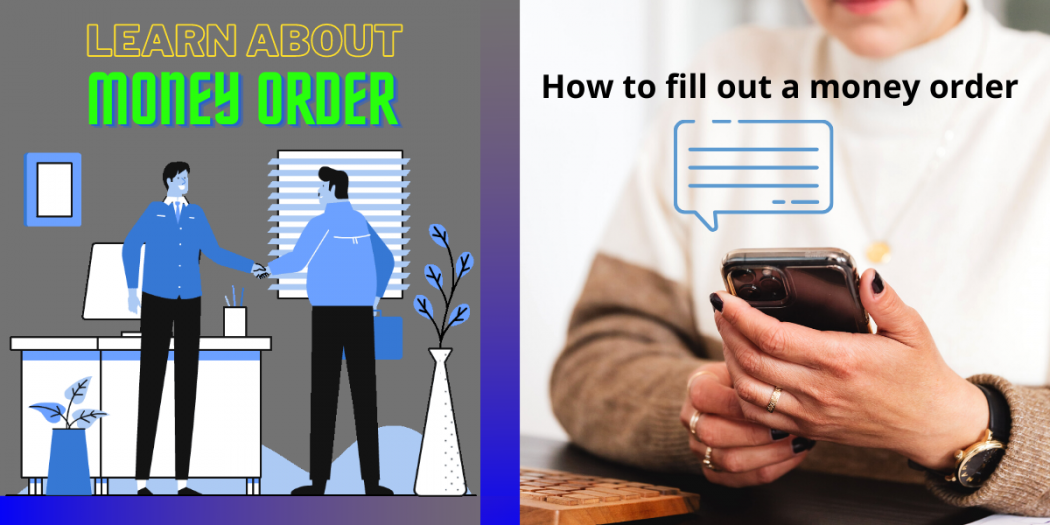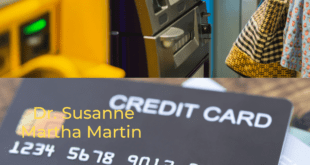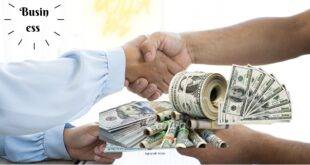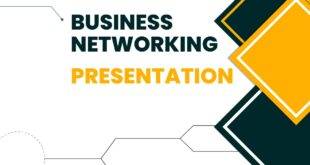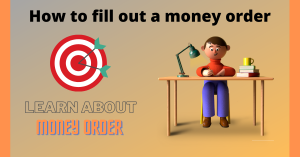

Money orders are one of the trustworthy payment methods to pay bills or even send money to family or friends. You may face a bunch of complications while filling out a money order but trust me; when you’ll learn how to fill out a money order, you won’t prefer to use your checks again.
Compared to the personal checks, money orders are one kind of guaranteed form that is fully pre-paid before being issued. That’s why a legal, legitimate order receiver can remain confident that it won’t bounce, and whenever he goes to cash it, he will surely get the money. Honestly, that’s what makes money orders special.
The process of filling money orders is quite the same as filling a personal check. The different outlets based on the specific banks separate the money order format, and that’s what exactly can puzzle you at the time of filling the money order.
But as now you’re here, you won’t have to worry about these complications anymore. In this article, I’m going to provide you with a step-by-step guide for filling a money order and reveal some untold truth about it. Things will be more interesting, so leave all your tasks for a couple of minutes and concentrate on the article.
What Do You Need to Fill Out a Money Order?
They may have a different format, but all of them are crafted with some basic information, and you’re required to fill all of that information appropriately. In this case, you also have to the full fill the requirement of the institution. Anyway, let’s have a look at what information are needed to be filled while acquiring a money order.
- Name of the payee
- Address of the payee
- Name and address of the account holder
- The billing account number and the purpose of the transaction
You’re gonna need a form of payment for purchasing the money order (check, debit card, check, or cash will work) as I’ve said that the appearance and the requirements can vary based on different types of institutions. So, keep these things in mind when you are about to fill out a money order.
What? Wondering what’s the role of checks or debit card when I’ve already assured money order won’t require you to use checkbooks anymore? Yes, it’s true that once you have a money order, you won’t have to use your checkbooks, but at the initial stage, the institutions will ask for some valid assets to determine your qualifications. If you want, you can also purchase the form with cash. So, it’s not going to be a big deal.

How to Fill Out a Money Order Step-by-step
After purchasing the form, you must pay proper attention to it. Make sure to fill it out carefully with accurate information. Your mistakes can hinder the easy process of turning the money order into cash, and the issued person may not be able to use it. In fact, you may also have to buy another form to solve the mistakes, and that’s going to cost some additional money. Let’s highlight the key points one by one to reduce the chances of unwanted mistakes.
Step 1 – Fill in the Recipient’s Name
At the very beginning of the form, you’ll notice a section/field named “pay to” or “pay to the order of.” You have to fill this field with your desired payee’s name. In this case, you can write an individual’s name or the name of any organization. It’s going to work for both cases, so it’s up to you what you’re gonna select.
No matters what you write to fill in the field, check the spelling properly. There are several people and companies with the same name; you will definitely not want to send the money to someone else.
As it’s only going to be authorized for a particular person or business, it’ll be better if you fill this section right after purchasing the form.
In case if you lose the money order after full filling all other information except the payee’s name, someone can easily write their or their business name in that section. Thus, the money will be deducted from your account automatically. So, fill that section as early as possible. (It’s kinda like a pro tip; you can thank me later)
If there’s an option named “from,” sender,” or “purchaser,” fill that section out with your name.
Step 2 – Write Down Your Name in the Purchaser Section
Inspect the form and locate the purchaser section. Generally, you’ll find that under the payee’s section, it could be somewhere else according to the format. However, once you have found that, fill the fields properly with your address.
You can also find a second address field where it will ask for the payee’s address. You have to fill that out with the person’s name or a business name to whom you’re sending the money.
Step 3 – Submit Your Account or Order Number in the Memo Field
A memo line will allow you to identify the purpose of the money order and for which the money order is assigned. In simple words, you can specify whether you need to purchase any item to pay the particular debt or you need to pay off with cash. This section bears the utmost importance when you’re paying a bill.
Anyway, this is the section where you have to put the account or order number of your payee. If you’ve got one, this is where you have to include it.
In some money orders, this particular field is also titled by “payment for” or “account number.” You have to fill that out with your payee’s account number. Filling it out will ensure that your account is credited for the payment.
Step 4 – Signature
There will be a portion named signature at the front of the money order. You have to sign your name in there. Your money order will become official with your signature, so it’s an important step, and you should pay proper attention to this.
You may also find this step named or titled with “Purchaser’s signature,” “Form,” “Drawer,” or “Signer.” All of these are the same; you have to accomplish the process with your signature.
By the way, make sure not to sign in the back of the money order. The back of the money order is for the person or business who is going to receive it. So, leave that place empty.
Once you accomplish the process with your signature, your money order is official now. Check the accuracy of your provided information before using it. If everything is well, enjoy the advantage of a money order.
Keep Your Receipt
You’ll get a receipt for your issued money order; it’ll contain a tracking number as proof of your payment. This number will allow you to know if your money order is cashed by the right person. In case if your money order is lost or somehow you have lost it, you can also replace your money order with the help of this tracking number. You may have to pay a processing fee for the replacement of your money order, but you can save the large amount of money that you have entered in the money order. You can even cancel the money order with this tracking number. Remember, it is difficult or sometimes impossible to trace a money order without this receipt.
So, I strongly recommend to store it in a safe place so that you can handle the unwanted situations with fewer complications.
This is it; if you follow the above steps accordingly, you’ll be able to fill your money order without any hesitation.
Note: As I have said, each institution uses different formats (their own format) of money order form, so the section-wise information may vary a little. But things are the same, just like the way I have explained above. You should check the titles properly.
How to Deliver a Money Order?
As now you got a money order with complete information, you have to understand the process of delivering it. First of all, make sure to detach the receipt. If you have checked everything and completed it properly, you can simply mail it or give a hand delivery to your recipient. The recipient is the only person who will be able to cash it.
As I have said before, don’t lose the receipt. It’s a record of your payment, and you’re gonna need it for identifying whether your money order is cashed or not.
What Is a Money Order?
In order to acquire in-depth knowledge about money order, you have to first understand what it actually is! You might have got a little idea from the above discussion, but in this section, I’m going to discuss it in more detail. So, first thing first, what is a money order? Well, a money order is one kind of certificate issued by different types of banking institutions or sometimes by the government. Its functionality is quite similar to the checks. But when you have a money order, you won’t have to carry your checkbook. You won’t even have to pay for the checkbooks either.
Money orders are always readily accepted and can be converted into cash easily. You won’t even have to access your standard checking account during the entire process. That’s what has made the money order process extremely popular. Through money orders, you can pay your debt or any other small payments without any hassle. In simple words, a money order will provide you with the simplest way for the transaction of money.
In 1882, American Express was the first organization that issued Money order. Due to its popularity, it gained vast popularity, and later it was widely known as a traveler’s check.
How Does Money Order Work?
After buying the money order, the person has to fill the form with appropriate information (Like the way I have discussed above) along with the name of the recipient and amount of money. Commonly, the maximum limit of a money order is 100 dollars. This means if anyone had to pay more than 1000 dollars, he has to purchase multiple money orders.
The authorized institution provides the user with a form that contains the payee’s name, issuer’s name, and the amount of money that’s going to be cashed. In this case, the dollar value won’t require the payee to submit any additional fees. The rest of the process is similar, and you can get them through the above section, where I’ve discussed how to fill out a money order step-by-step.
Advantages and Disadvantages of Money Order
Paying through money order is relatively easy, and, in some cases, it’s also safer than the personal checks. Personal checks are printed with the routing number and the bank account number on the bottom, which can be stolen easily. With this information, one can easily create fraudulent checks.
But things are a bit different with the money orders. It doesn’t include any personal information which can harm the purchaser in the long run. Okay, let’s show you some highlighted advantages and disadvantages of the money orders.
Benefits of Money Orders
- It doesn’t include any personal information
- The recipient can cash it from any credit unions or local banks. No need to search for any specific points to turn it into cash.
- One can also deposit his respective money order into a bank without paying any fee.
- The money order can issue from anywhere of the globe and can be cashed in other places too. This means if anyone issues the money order from one country, the payee can cash it in another country.
Drawbacks of Money Orders
- Money orders are more difficult to track compared to personal checks. The entire track down process can take weeks or sometimes more.
- In some cases, cashing the money order requires an additional charge.
- If you take the money order to cash from other points, the cashing time can extend sometimes.
- If you fail to fill the money orders appropriately, it can be faked and used in some common online scams. So, make sure to pay proper attention while filling the information.
I agree that money orders do have some downsides, but when you compare them with the safety and conveniences, the downsides will become smaller. Every essential item has a mixer of benefits and drawbacks, so the choice is yours.
When Should You Use a Money Order?
If you’re still here and reading this far, it means you’re interested in the money orders. Okay, now tell me, do you know when you should use a money order? In this section, I am going to discuss the usage of a money order.
The money orders are actually used when someone has to pay a bill, or his debt or someone wants to acquire the money that he lent earlier. This process is way more effective when regular checks or smartphones aren’t a suitable option for the transaction of money.
It’s only a simple piece of paper, but its value is greater than most other bank documents. And the greatest thing about the money order is that it’s more secure than the traditional checks or transaction methods. It doesn’t contain any personal information like account number, phone number, address, etc.
Money orders are more useful when a person doesn’t have his own check account or don’t want to use any personal accounts for the transaction. In fact, money orders are prepaid, and it doesn’t bounce when they are cashed, which another good reason for its popularity.
You can compare the certified and cashier’s check with the money grams because they are also a secured option, even more, secure than the money orders. But honestly, they are expensive, and you may have to visit your respective bank most of the time. In comparison to that, money orders are less expensive and relatively easier to use.
Where to Get Money Order?
You can acquire the money orders in two ways, from the online platforms and the typical platforms. But online money orders are rare nowadays, and they are a bit pricey too.
So, if you want to buy the typical money orders, you have to pay a visit to the organizations that sell money orders.
Don’t worry; it’s not rare. In the US, you can find around 200,000 locations to buy money orders. Most of them remain open from morning to evening of every working day. Therefore, you won’t have to face any complications while buying a money order. You can buy them from Walmart, 7-Eleven, or from the branches of Western Union and Moneygram.
What Do Money Orders Cost?
You have to pay an involved fee while purchasing almost all money orders. The charges vary with different organizations. As an example, if you buy the money orders from Walmart, they’re going to charge 88 cents. This charge is common at almost every location.
On the other hand, if you buy it from USPS, they’ll charge 1.25-1.75 dollars, even though it mostly depends on the amount you’re buying. So, the price may reduce if you’re about to buy multiple money orders. However, the international price of money orders is higher, and it can be around 10.25+ dollars.
Credit unions and banks also sell it at a higher price. But some bank offers their money orders completely free. This offer is limited to a certain category of customers, and sometimes this offer lasts for only a limited period of time.
If you buy them from the credit card companies, they’ll also charge a higher level of interest. It’s because money orders are like cash in advance to them. In this case, you can avoid the fees by pilling up the interest charges. So, check if this process is available for you or not.
Wrapping Up
Western Union and Money gram are two popular and largest money transfer providers across the globe. They have millions of users, and all of them are satisfied with their money order service. So, if you’re willing to use a money order, you can check them out.
Wait a minute! Are you now going to ask how to fill out a money order from Money gram or how to fill out a money order from Western Union? Oh c’mon! The above process will help you to fill out your money gram no matter which organization you choose. So, make sure to follow the steps thoroughly.
I’ve covered all information about money orders; hopefully, you won’t have to ask anyone how to fill out a money order again. If you’re still confused, or interested to learn more about it, don’t hesitate to use the comment section below and inform me about your interests. I’m eagerly waiting to hear from you.
 Best Business Ideas Open up your business to new possibilities.
Best Business Ideas Open up your business to new possibilities.
